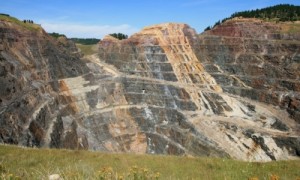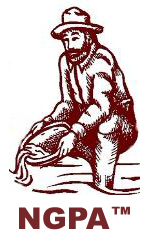How to Find a Gold Mine: Resources on Where to Find Gold Mines


An open-pit gold mine in South Dakota.
There are plenty or reasons why amateur gold prospectors might be interested in how to find gold mines–whether active or abandoned–in their state. As we’ve said before many times on this blog, the best place for panning, prospecting or metal detecting for gold is in geographic locations where it has been found in the past. If gold has been extracted from a general area previously–even if it was many decades ago–then the odds are that it still exists there for someone to find. An area where a gold mine once existed is a very likely place for your to find gold nuggets, flakes and dust in small amounts today.
Remember: just because a gold mine was abandoned doesn’t mean that they extracted all of the gold out of the area. On the contrary, there is almost certainly plenty of gold deposit traces left in the general vicinity of almost every abandoned gold mine. Two important questions, though, are how much gold remains, and how easy it is to find.
Prospecting for gold around the locations of closed gold mines can be done in several ways, but the methods most likely to produce results are panning for flakes in nearby creeks and streams, or metal detecting for gold nuggets below the ground. After you’ve identified locations of nearby abandoned gold mines, it will help if you can do some research on what kind of gold was mined there, how prominent it was, and whether or not amateur prospectors have panned or metal detected for gold successfully in that area.
Another consideration when trying to find gold mines is whether or not amateur prospecting, metal detecting and panning is allowed on the property today. If the land is private, then you can’t prospect for gold there without permission from the owners, and you could get into legal trouble if you trespass on the land. If it’s public land or owned by the federal or state government, then it might allow certain forms of recreational prospecting.
Always remain realistic with your expectations when you prospect for gold at the site of a former mine. The truth is that if an abandoned mine still has plenty of easily-found gold still lying around, then the odds are that it has already been identified by panners and prospectors and will already be a well-known, popular spot for recreational prospecting. That doesn’t mean that you can’t still find gold at that location, but you should do it because you enjoy the outdoor activity, not because you think you’re going to strike it rich after an afternoon of panning in a river or creek.
States where large scale gold mines have operated include Alabama, Alaska, Arizona, California, Colorado, Florida, Georgia, Idaho, Maryland, Michigan, Montana, Nevada, New Mexico, North Carolina, Oregon, Pennsylvania, South Carolina, South Dakota, Tennessee, Texas, Utah, Virginia, Washington and Wyoming.

